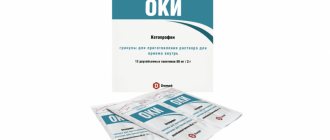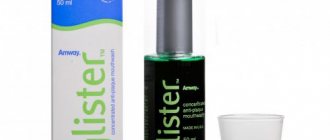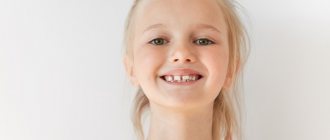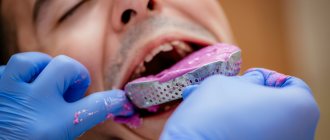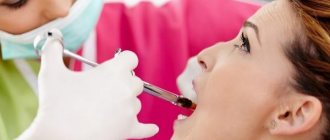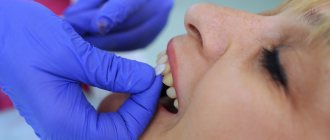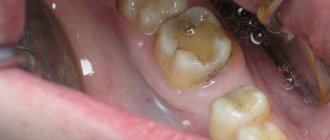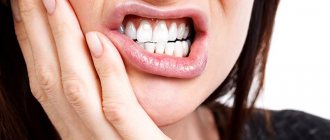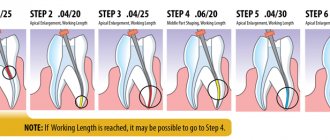A mouthwash is a special liquid that is used after brushing your teeth or for additional cleansing of the mouth during the day. The product is inexpensive and brings great benefits, but still remains insufficiently widespread. There are many different types of dental rinses sold on the modern market, so people are often lost in choice and don’t know which option is best.
Why do you need a rinse aid?
Mouth rinses are used for the prevention and treatment of dental diseases. Their use provides more thorough dental care and reduces the risk of developing inflammatory diseases.
Main functions of mouth rinse :
- cleaning the spaces between teeth from bacterial agents and food debris;
- breath freshening;
- maintaining dental health and accelerating recovery in case of disease development;
- prevention of complications;
- eliminating bleeding gums;
- reduction of tooth sensitivity.
Dentists at the Nurimed clinic recommend the use of special mouth rinses as part of caries prevention.
Recipes based on natural remedies
A decoction of oak bark will help get rid of bleeding gums and strengthen them. You can supplement the mixture with sage, chamomile or rose hips. If only oak bark is used, it is better to cook it in a water bath: a couple of tablespoons of crushed oak bark are placed in an enamel bowl and filled with water. The dishes are placed in a saucepan with water; it all needs to be heated for about half an hour.
When adding other herbs, a tablespoon of the mixture per one and a half glasses of water is enough. Bring to a boil and simmer a little under the lid, pour into a convenient container and cool. An important point: it is better to store the product no longer than a day, after which all the beneficial substances will evaporate.
For fresh breath, mouthwashes with mint are always useful. For half a liter of water you will need two tablespoons of dry green tea without additives and natural dried mint. Pour the herbs with clean hot water (500 ml),
leave to infuse overnight. In the morning, add a teaspoon each of benzoin tincture and myrrh infusion. Keep refrigerated.
An unusual recipe that will get rid of germs. It is only suitable for adults: add a tablespoon of thyme, myrrh and sage (dry herbs) to a cup of cognac and leave to steep for two weeks. The infusion is filtered and diluted with water (1:1) before rinsing. For a light whitening effect, you can add a spoonful of lemon juice.
Mouthwash composition
Depending on the type of rinse aid, it may contain different components. However, the basic elements remain the same:
- Fluorine. This element is necessary to strengthen tooth enamel, it helps to avoid caries, and reduces the risk of developing increased abrasion and sensitivity. In modern liquids, manufacturers use a progressive component - amino fluoride. The amount of fluoride may vary, so it is recommended to take the option that your dentist recommends. Operating principle: after using the product, a protective film is formed on the enamel, from which fluoride gradually penetrates into the surface of the tooth over a couple of hours.
- Antiseptics. The liquid may contain: chlorhexidine, cetylpyridinium chloride, triclosan and some others. They prevent the active proliferation of bacterial agents in the mouth. Therefore, the rinse helps prevent gingivitis, stomatitis, and treat periodontitis. You can use antiseptic products without harm for 2-3 weeks.
- Alcohol. Included in most brands. It is the best preservative and solvent, but its percentage composition may vary. When choosing a product for a child, you need to pay special attention to this point and purchase an alcohol-free mouth rinse.
- Xylitol. A substance with a sweet taste, but unlike regular sugar, it strengthens enamel and reduces the risk of developing caries.
- Plant extracts. Usually, extracts of medicinal plants are added that have anti-inflammatory, soothing, strengthening, and restorative effects. You need to carefully read the composition and make sure that you are not allergic to herbal ingredients.
Essential oils
A recipe based on a weak chamomile decoction will help soothe gums and relieve bleeding: half a liter of decoction, a tablespoon of natural liquid honey and ten drops of several types of essential oils: orange, mint, pine, eucalyptus, cloves, sage. The oils are first added to the honey, everything is mixed well and dissolved in water. Another advantage of the composition is that it has a good whitening effect, and the enamel is not damaged.
Propolis and calamus will help quickly relieve any inflammation: a teaspoon of propolis and calamus tinctures, five drops of tea tree oil and one hundred ml of water. The solution must be stored in the refrigerator in a tightly sealed container.
Beneficial properties of mouth rinse
The use of a rinse is recommended for all people, even those with absolutely healthy teeth. Useful properties of the rinse aid:
- cleansing the surface of the teeth from plaque, which begins to form almost immediately after classical brushing with a toothbrush;
- protection against caries, help for sensitive teeth;
- elimination of unpleasant odor (its source is most often dental plaque);
- antibacterial effect of mouth rinse (prescribed after dental surgery to prevent infection);
- prevention of the formation of tartar, dissolution of the initial formations of hard plaque.
Even the most thorough brushing of your teeth with the right brush and the perfect toothpaste will not help get rid of the amount of bacteria that the mouthwash destroys.
How to rinse your mouth correctly
Finally, we would like to give some tips on how to use mouthwash as effectively as possible. The rules are simple:
- You cannot think that mouthwash completely replaces a toothbrush. This is an additional hygiene product.
- You need to rinse correctly. Place the amount of mouthwash indicated on the package into your mouth. Make sure you rinse your entire mouth thoroughly. The minimum procedure time is 30 seconds. This makes it more likely that all food debris has been removed along with plaque and bacteria. Do not swallow liquid!
- There is no need to rinse off the rinse aid with water! This will significantly reduce the effect
It is preferable to use mouthwash after every meal.
How to use mouthwash?
Using the mouthwash is very easy. Use it after regular teeth brushing. It is best to consider what kind of toothpaste you use when choosing a liquid. For example, if the paste contains a large amount of fluoride, then it is better to choose a rinse aid with a reduced content.
Dentists recommend rinsing your mouth after each brushing; you can additionally use the product after meals. There is no need to rinse your mouth with water after using a special liquid, since all active ingredients are washed off and the usefulness of the rinse is reduced.
Despite the fact that the components of the product are not intended to enter the gastrointestinal tract, swallowing a small amount of mouthwash is harmless to humans.
Six Tips for Using Dental Rinse
- First of all, carefully read the instructions for use and study the composition. It is possible that the rinse aid needs to be diluted with water beforehand. And remember: mouthwash should not be swallowed!
- The usual amount of rinse liquid is 10–15 ml for an adult and 5 ml for a child. Often, rinses have a measuring cap, which makes it convenient to determine the desired dose.
- Be sure to brush your teeth well with toothpaste or powder before rinsing. Otherwise, rinsing will be useless: the active substances simply will not stay on the teeth.
- It is recommended to rinse your teeth for at least 40 seconds, ideally up to 2 minutes. It may seem difficult, especially at first, but the results are worth it.
- After the procedure, do not eat or drink anything for at least half an hour to allow the active substances to take effect.
- Remember: the mouthwash does not replace the usual brushing of teeth, it is an auxiliary product that works in combination. It is not recommended to use it more than three times a day. We wrote earlier about how to choose the right toothpaste.
Contraindications for use
In some cases, using mouthwash is not appropriate. There are few such situations, but dentists always warn about possible contraindications. These include:
- Treatment of alcohol dependence (does not apply to products that do not contain alcohol).
- Pregnancy and breastfeeding (it cannot be said that good and high-quality products can somehow harm the mother or child; caution is due to the fact that clinical trials are not conducted on pregnant and lactating women).
- Allergic reactions to components of the liquid (most often, allergies to plant substances or antiseptics are observed).
- Children under 6 years old, and if the product contains ethyl alcohol - up to 12 years old (usually the packaging indicates at what age the liquid can be used).
If you are not sure whether you have an allergic reaction to any of the components of the product, do a test. Apply a small amount of liquid to the skin and wait a quarter of an hour. The presence of a rash, swelling, or severe hyperemia indicates an allergy to one or more constituent substances.
Nuances of selection and application
There are many formulations on the market that differ in color, taste, smell, shape, and type of packaging. They also differ in price, but this factor, according to Anna Derevyannykh, is not always indicative when choosing a product.
“Some formulations use expensive ingredients, while others use budget ones,” comments the specialist. “But the price is most influenced by marketing, packaging and advertising costs. In general, all rinses, regardless of price, are no different from each other.”
Therefore, when choosing a dental elixir, you should carefully read its composition and select a product depending on the condition of the oral cavity, existing problems or for their prevention. But you definitely shouldn’t pay attention to the color. According to the specialist, you can safely use red, blue, and green solutions every day. Even the brightest rinse does not stain either the enamel or gums. The only exceptions are patients who have undergone complex whitening. After whitening procedures, you should avoid using colored balms.
According to dentists, it is necessary to use mouthwash daily. Ideal - after each brushing of teeth with a brush and toothpaste. The solution should be taken into the mouth and vigorously move the cheeks for 30-60 seconds. During this time, the composition, moving under pressure, will have time to wash away impurities from the surface of the enamel, and the active components will begin to have a therapeutic effect on the oral cavity. Then you should spit out the liquid and do not eat or drink anything for half an hour. The longer the medicinal components remain in the mouth, in direct contact with the gum tissue and tooth enamel, the better the therapeutic effect they have.
pixabay.com/
Which mouthwash is best?
Before choosing a product, you should understand for what purpose you want to use it. If you want to improve the color of your enamel, it is better to purchase special whitening rinses that are used according to the instructions for a certain amount of time.
Fluoridated liquids are used to strengthen enamel and prevent caries. Check the fluoride concentration in the toothpaste you are using first.
If there are inflammatory processes in the oral cavity, it is recommended to take a product containing an antiseptic. Mouthwash for gum inflammation is used continuously for up to 3 weeks, preferably as prescribed by a dentist. For gum problems, products with plant extracts are used for a long time.
In some cases, a person needs to strengthen his teeth and reduce the risk of tooth loss. Elderly people are especially susceptible to this problem. Mouthwash is good for periodontal disease.
It is best to consult with a dentist at the Nurimed clinic before purchasing. The specialist will examine the oral cavity, identify the main problems and recommend suitable rinses.
Clinical researches
ASEPTA rinses are clinically proven effective. For example, repeated clinical studies have proven that the two-component oral product ASEPTA ACTIVE more effectively combats the causes of inflammation and bleeding compared to single-component rinses - it reduces inflammation by 41% and reduces bleeding gums by 43%.
Sources:
- The role of anti-inflammatory rinse in the treatment of periodontal diseases (L.Yu. Orekhova, A.A. Leontyev, S.B. Ulitovsky) L.Yu. OREKHOVA, Doctor of Medical Sciences, Prof., Head of Department; A.A. LEONTIEV, dentist; S.B. ULITOVSKY, Doctor of Medical Sciences, Prof. Department of Therapeutic Dentistry of St. Petersburg State Medical University named after. acad. I. P. Pavlova
- Report on determining/confirming the preventive properties of commercially produced personal oral hygiene products: Asepta toothpaste used in combination with Asepta mouthwash and Asepta gum balm Head. Department of PFS Doctor of Medical Sciences Professor S.B. Ulitovsky St. Petersburg State Medical University named after Academician I.P. Pavlova. Faculty of Dentistry. Department of Preventive Dentistry.
